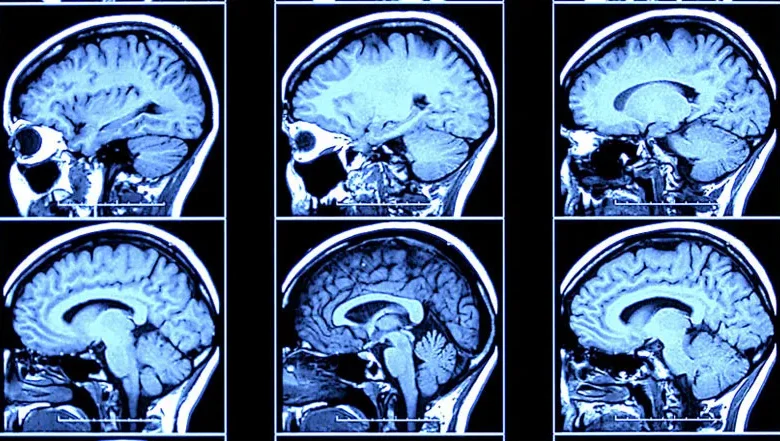Poster of a Criminal Brain- On View

Have you ever paused to think about what the inner workings of a criminal brain might look like? What drives their decisions, fuels their motivations, or shapes their actions? As dramatic as it sounds, delving into the mind of a criminal isn’t just the stuff of psychological thrillers and true crime documentaries. A fascinating concept that has recently captured attention is the idea of the “poster of a criminal brain.” This evocative phrase conjures an image of detailed diagrams, vivid illustrations, and thought-provoking narratives aimed at dissecting and presenting the cognitive landscape of individuals with criminal tendencies.
In this article, we’ll explore this concept and its potential for education, psychology, and even entertainment. Whether you’re a curious reader, a psychology enthusiast, or a professional in criminal justice, this journey promises to be both insightful and engaging. Let’s dive in.
The Origins: Why Study the Criminal Brain?
The human brain has been studied for centuries, with scientists and philosophers seeking to understand what makes us tick. The criminal brain, in particular, has been a subject of intrigue because of its deviation from societal norms. What makes one person resort to crime while another lives a law-abiding life? Is it due to genetics, upbringing, or a mix of both?
The 19th century saw the rise of criminology as a scientific discipline. Figures like Cesare Lombroso, often considered the father of modern criminology, suggested that criminals had distinct biological and psychological traits. While some of his theories have been debunked, the idea of understanding criminal behavior through the lens of neuroscience and psychology has endured.
In recent years, technological advancements like MRI scans and brain mapping have given us a closer look at the neural mechanisms behind antisocial and criminal behaviors. These breakthroughs have paved the way for visual representations—“a poster of a criminal brain” if you will—that could serve as powerful tools for learning and advocacy.
Anatomy of a “Criminal Brain” Poster
If you’re picturing a poster, think of something vibrant and detailed, like an infographic that combines art with science. Here’s what it might include:
1. Brain Regions and Their Roles
A key component of such a poster would be a diagram of the human brain, highlighting areas associated with criminal behavior. For instance:
- Prefrontal Cortex: Often linked to decision-making, impulse control, and moral reasoning. Dysfunction here can lead to poor judgment and risk-taking behaviors.
- Amygdala: Plays a role in emotion regulation and aggression. Overactivity might be associated with heightened aggression, while underactivity could relate to a lack of empathy.
- Reward Systems: The nucleus accumbens and dopamine pathways might be emphasized, showing how the brain’s reward system can reinforce risky or harmful behaviors.
2. Psychological Factors
The poster could feature illustrations or icons representing traits like:
- Lack of empathy
- Impulsivity
- High levels of narcissism or psychopathy
3. Environmental Influences
To provide a balanced view, the poster might also depict external factors, such as:
- Childhood trauma
- Socioeconomic conditions
- Peer influences
4. Interactive Elements
For a modern twist, imagine a QR code on the poster that leads to interactive content. You could watch animations explaining how certain brain regions function or read case studies about real-world applications of this knowledge.
What Makes This Approach Powerful?
1. Accessibility of Complex Science
The human brain is endlessly complex, and not everyone has the time or background to read dense neuroscience papers. A visually appealing poster breaks down this complexity, making the science approachable for all.
2. A Tool for Education
Imagine such a poster hanging in classrooms, psychology departments, or police academies. It could spark discussions about the causes of criminal behavior and ways to address it. It could also challenge stereotypes by showing that not all criminals are “born bad.”
3. Advocacy for Rehabilitation
Understanding the brain can lead to more compassionate approaches in criminal justice. Instead of focusing solely on punishment, a deeper understanding of a criminal’s psyche might advocate for rehabilitation and mental health support.
4. Capturing Public Interest
Let’s face it: We’re fascinated by crime. Shows like Mindhunter or Criminal Minds thrive on our collective curiosity about what goes on in the mind of a criminal. A poster like this taps into that interest while educating at the same time.
Debates and Ethical Considerations
While the concept of a “criminal brain” is compelling, it’s not without controversy. Here are some of the debates surrounding it:
1. Determinism vs. Free Will
If certain brain traits are linked to criminal behavior, does that mean criminals have less control over their actions? This makes people wonder who is responsible and whether the justice system is fair.
2. The Risk of Stereotyping
Labeling individuals based on brain scans or psychological traits can lead to harmful stereotypes. Not everyone with an underactive prefrontal cortex is destined to become a criminal.
3. Privacy Concerns
Using neuroscience in criminal justice opens up concerns about privacy. Would it be ethical to scan someone’s brain to predict future behavior?
Real-World Applications
1. Criminal Profiling
Posters like these could be tools for training law enforcement officers or criminal psychologists. Understanding the brain’s role in behavior might help in creating more accurate criminal profiles.
2. Mental Health Interventions
Knowing the neural and psychological traits associated with criminality could lead to targeted interventions, such as therapy or medication, to address these issues before they result in crime.
3. Public Awareness Campaigns
Organizations working on crime prevention could use such posters as part of awareness campaigns. By educating the public about the science behind criminal behavior, they might foster more empathy and support for rehabilitation programs.
The Future: Beyond Posters
While a poster of a criminal brain is a captivating visual, it’s only the beginning. Thanks to new technology, we might see:
1. Virtual Reality Experiences
Imagine stepping into a VR simulation that shows you the world through the eyes of someone with a criminal brain. Such immersive experiences could deepen understanding and empathy.
2. AI-Driven Models
Artificial intelligence could analyze vast amounts of data to predict behaviors, offering insights far beyond what a static poster can provide.
3. Global Collaborations
As neuroscience evolves, international collaborations might create standardized representations of brain traits linked to criminality, fostering a global understanding of the issue.
Final Thoughts
The concept of a “poster of a criminal brain—on view” is more than just an artistic or educational endeavor; it’s a gateway into a deeper understanding of human behavior. By visually mapping the intersections of neuroscience, psychology, and criminology, such a poster can inspire curiosity, compassion, and critical thinking.
Whether you see it as a scientific tool, an educational resource, or a conversation starter, one thing is clear: the brain—criminal or otherwise—is endlessly fascinating. And who knows? Perhaps one day, a poster like this will hang in your office, sparking conversations that lead to a better understanding of ourselves and the world around us.



